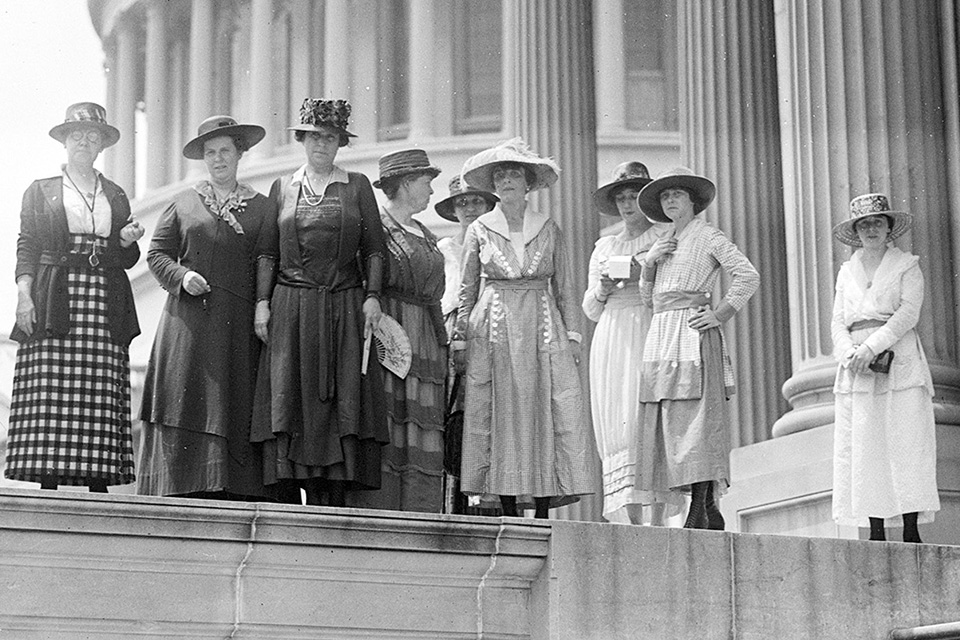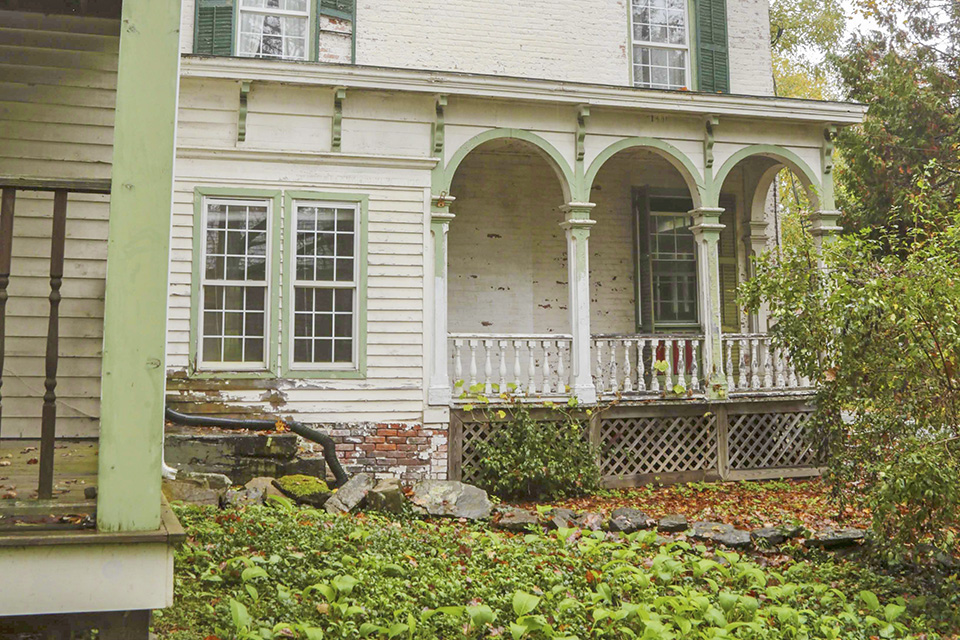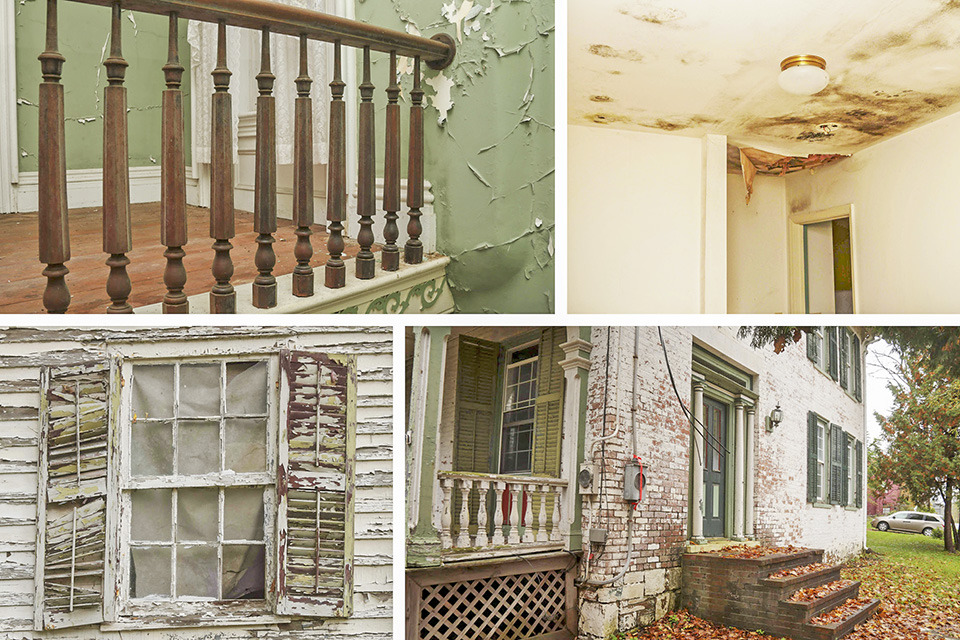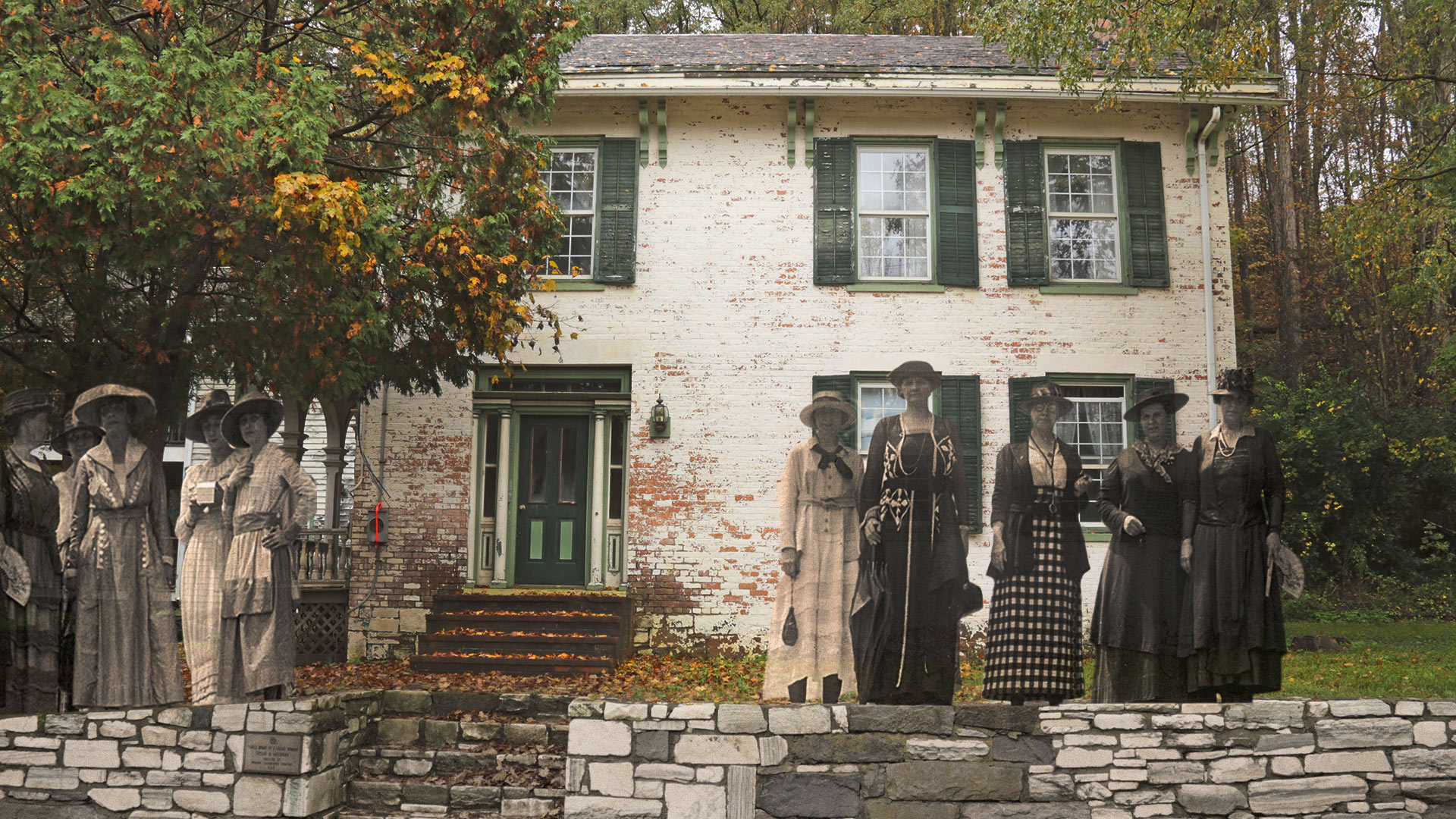The home where Susan B. Anthony lived during her teenage years, and where she formed many of her fundamental ideas about abolition and women’s suffrage, still stands in the rural hamlet of Battenville, New York, near the Vermont border. After passing through a succession of owners, the historic property seemed to have a bright future when the State of New York Department of Parks, Recreation, and Historic Preservation purchased it in 2006. But the property has remained vacant since that time, and now a lethal combination of mold, moisture, and neglect threatens to destroy this important piece of American history.
History
In 1833 the thirteen-year-old Susan B. Anthony (February 15, 1820 – March 13, 1906) moved with her family to a two-story brick house in the hamlet of Battenville, New York. The family had come from Massachusetts to Battenville in 1826, where Susan’s father, Daniel, a devout Quaker and abolitionist, had arranged to manage a local cotton-milling operation in partnership with Judge John McLean. Daniel supervised the construction of the family’s new home, which began in 1832. In the wake of national financial woes manifest in the Panic of 1837, the Anthonys were forced to sell the home in 1839, along with many of their personal possessions, to satisfy creditors. They briefly relocated to the nearby town of Center Falls before moving to Rochester, New York, in 1845.
As a social reformer, abolitionist, and leader in the struggle for women’s suffrage, Anthony’s importance in U.S. history generally, and in the women’s suffrage movement in particular, is difficult to overstate. She and friend Elizabeth Cady Stanton founded the New York Women's State Temperance Society in 1852 and the Women's Loyal National League in 1863. The latter organization presented a petition to Congress, with nearly 400,000 signatures, to abolish slavery. The effort was the largest petition drive in the nation’s history and was key in bringing about the passage of the Thirteenth Amendment in 1864. In 1866 the pair founded the American Equal Rights Association to “secure Equal Rights to all American citizens, especially the right of suffrage, irrespective of race, color or sex," and three years later, the American Woman Suffrage Association.
 Suffragettes at the U.S. Capitol, 1919, photo courtesy Library of Congress.
Suffragettes at the U.S. Capitol, 1919, photo courtesy Library of Congress.
Spurring a nationally publicized trial, Anthony registered and voted in the presidential election of 1872 and was prosecuted and fined for doing so (she refused to pay the fine). In 1878 she and Stanton once again played a key role in introducing an amendment to Congress giving women the right to vote. The Nineteenth Amendment to the U.S. Constitution, eventually known as the Susan B. Anthony Amendment, was ratified on August 20, 1920, more than fourteen years after Anthony’s death.
The time that Anthony spent in the Battenville home would prove formative to her outlook and commitment to many civic endeavors. It was upon moving to Battenville that the young Susan got her first glimpse of slavery, meeting two enslaved people in the McLean household where the Anthony’s temporarily stayed. By the age of seventeen, she had already begun collecting anti-slavery petitions. While she was living in the Battenville residence and attending a one-room school in nearby Jackson, the local teacher refused to instruct Anthony on long division, telling her that that subject was something girls didn’t need to know. Susan was then taken out of school to be taught in a “home school” established by her father.
Her consciousness of the limited rights afforded to women was also awakened during the two weeks that she filled-in for another young woman working as a “spooler” at the mill managed by her father. There she learned firsthand that the wages earned by many of the hardworking young women went instead to their husbands or fathers. It was also while living in Battenville that Anthony began her career as a teacher, instructing younger pupils in an unassuming room in the top story of a wing added to the Anthony’s home. She later taught at the district school in Reid’s Corners, “earning $1.50 per week, a sum apparently far less than the school’s former male teacher.”
 Susan B Anthony's Childhood Home, Battenville, NY, photo by Clifford Oliver, 2018.
Susan B Anthony's Childhood Home, Battenville, NY, photo by Clifford Oliver, 2018.
After the Anthonys’ departure, the home changed hands several times. In 1885 a new owner remodeled the interior and dressed the exterior in the Italianate style, which was popular at the time. In subsequent decades the house slowly deteriorated. The attached schoolroom was razed in the 1990s and replaced with an apartment. In 2005 the last private owner defaulted on the mortgage, and the Federal Home Loan Mortgage Corporation foreclosed on the house in early 2006. When two auctions brought no bids, the State of New York Department of Parks, Recreation, and Historic Preservation purchased the property for $1.
The brick masonry dwelling is situated against a hillside along a blind curve of the state road (Route 29) that passes near its front entrance. The one-acre property includes a carriage barn, a lean-to addition, and the historic home, which is set within a grass lawn interspersed with mature trees. A steep unpaved driveway runs between the house and the carriage barn, making parking and public access very difficult. There is little to suggest the house’s historical significance. A small placard funded by the Daughters of the American Revolution is immured in the stone retaining wall in front of the home, labelling it as Susan B. Anthony's childhood home, while a sign suspended from a post in the front yard notes that she lived there from 1832 to 1839.
The Susan B. Anthony Childhood Home was listed in the National Register of Historic Places in 2007. As the National Register nomination states, “The time Susan B. Anthony spent in Battenville during this period left a profound imprint on her, and as such the nominated house remains an exceedingly important historic resource chronicling this period of her life.”

Threat
Although owned by the State of New York, the Susan B. Anthony Childhood Home has no on-site caretaker and has been vacant since January 2006. The many maintenance issues associated with any structure of its age have only been exacerbated by the lack of occupancy. The condition of the house and surrounding property has been declining steadily due to the infiltration of moisture. The area to the rear of the house is wet most of the time, and black mold has been visible within the home for a decade or more.
When the State of New York purchased the site in 2006, then-Parks Commissioner Bernadette Castro had this to say: “By acquiring this historic property that was at risk, the State is ensuring that the Susan B. Anthony House will be preserved for the people of New York and the nation… For historians, preservationists, and future generations of New Yorkers, we are delighted to be the new steward of the house and help safeguard the rich heritage it represents for one of the most pivotal figures in the women’s movement and social reform.” Unfortunately, that vision of sound stewardship has not been achieved.
What You Can Do to Help
Although the location of the Susan B. Anthony childhood home pose challenges, with a renewed commitment and concerted effort, the home could yet be restored and maintained to communicate the important role in the history of women’s suffrage that it represents. It is already listed informally as a stop on the Women’s Suffrage Trail, and there are several sites in the area, associated with the Anthonys’ tenure in Battenville, that could comprise a future historic district, including remains of the milling operation where Susan briefly worked and the schools where she taught.
The nearby Battenville Cemetery (in the Town of Jackson) contains the graves of many of Susan’s family members, along with a monument honoring Daniel Read (Susan’s grandfather), placed there by Susan on her last visit to Battenville in 1905. Listed on the back are the names of many members of her family and their birth and death dates, as well as the locations of their graves.
Contact the following public officials and ask them to take proactive steps to ensure that the Susan B. Anthony Childhood Home in Battenville, New York, is restored and maintained:
New York State Assemblywoman Carrie Woerner (e-mail)
112 Spring Street, Suite 205
Saratoga Springs, NY 12866
Telephone: (518)-584-5493
Fax: (518)-584-5496New York State Senator Betty Little (e-mail)
Room 310
Legislative Office Building
Albany, NY 12247
Telephone: (518)-455-2811
Fax: (518)-426-6873Congresswoman Elise Stefanik (e-mail)
318 Cannon House Office Building
Washington, DC 20515
Telephone: (202)-225-4611U.S. Senator Charles Schumer (e-mail)
322 Hart Senate Office Building
Washington, D.C. 20510
Telephone: (202)-224-6542
Fax: (202)-228-3027U.S. Senator Kirsten Gillibrand (e-mail)
478 Russell Office Building
Washington, DC 20510
Telephone: (202)-224-4451
Fax: (202)-228-0282










